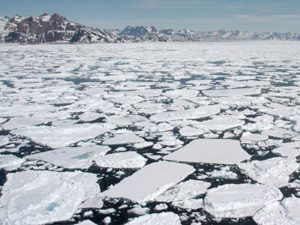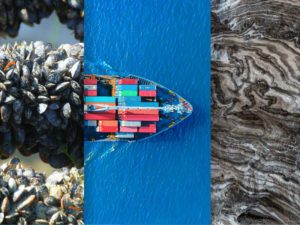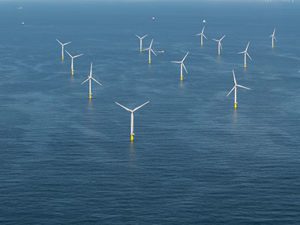As the United Nations kicks of its Decade of Ocean Science for Sustainable Development, Our Shared Seas checked in with United Nations Foundation’s Monica Dean, senior manager for energy, climate, and environment, Justin Kenney, senior advisor on ocean and climate, to learn more about the most promising opportunities to tackle climate change—and promote policies that are good for the ocean and for people—in the coming years.
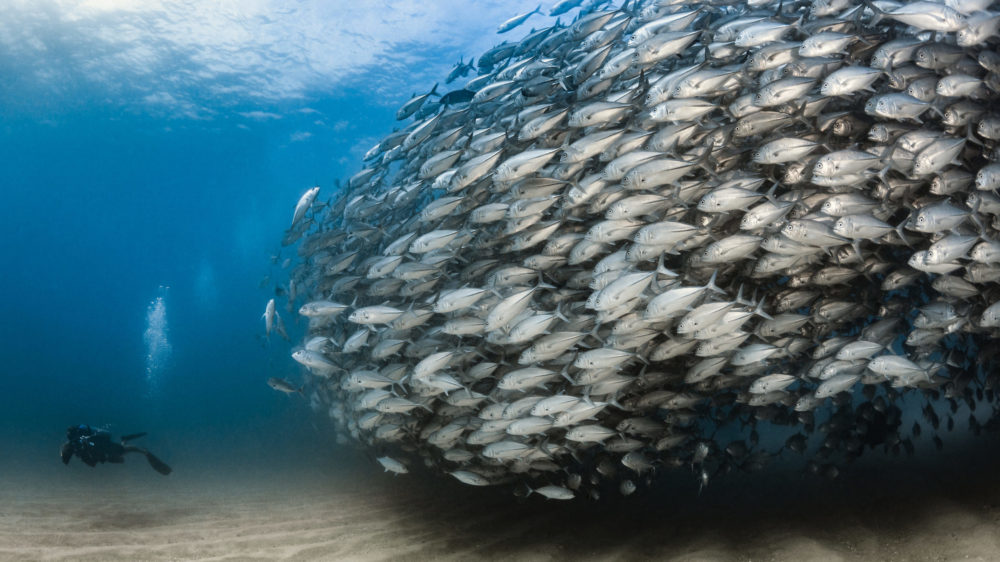
Photo: Nick Polanszky/Coral Reef Image Bank
How can we bridge the gap between current climate mitigation efforts and what is needed to reduce global emissions by half by 2030?
Monica: Countries have made a number of pledges to reduce carbon dioxide emissions 50 percent by 2030, and achieve carbon neutrality by 2050, among other commitments. The problem is, those pledges have not been translated into near-term policies that will actually deliver those pledges. Since the pandemic started, we have seen the first significant decline in global emissions—but for the wrong reasons. As we begin to recover from the pandemic and people return to their normal lifestyles—including commuting to work and traveling—we need tangible policies that will deliver that initial 50 percent reduction and lead the world.
One of the biggest challenges on the policy side is that the major commitments have focused on energy—including ocean-based renewable energy solutions—without focusing on other significant emissions sources, especially the transport sector. We need as much action around shipping as we do on zero emissions vehicles and charging infrastructure. To reduce emissions across the board, every emissions source must be addressed.
We need as much action around shipping as we do on zero emissions vehicles and charging infrastructure. To reduce emissions across the board, every emissions source must be addressed.
Justin: Over the last couple of years, we have talked a lot about ambition. Now we need to turn ambition into action. In this new year, with a new administration and renewed U.S. leadership, we have the chance to push toward the action needed to meet the ambitious goals that we have set.
The IPCC report and others have made it clear that the ocean has been taking the heat for climate change, becoming warmer, more acidic, and less productive. Now we need to pay more attention to how the ocean is emerging as a source of solutions to climate change. It is not the answer, but it is certainly is part of the answer.
Ocean-based solutions to climate change, such as the creation of effective marine protected areas, are an important part of addressing the climate crisis. Ultimately, protecting our ocean is good for people, communities, the climate, and biodiversity. It is encouraging to see the links among ocean, climate, and biodiversity being strengthened and it is critical to keep those connections intact.
Now we need to pay more attention to how the ocean is emerging as a source of solutions to climate change. It is not the answer, but it is certainly is part of the answer.
The key climate event of the year is the Conference of the Parties (COP) 26, which is set to take place in Glasgow in November 2021. What would signify success at this conference, and how should negotiators consider the role of the ocean in accelerating climate action?
Monica: Broadly speaking for COP 26, there are three things that would mean success. First, the negotiators need to finish the Paris Agreement rulebook. The biggest remaining item to sort out is the finance mechanism which is a critical tool for turning commitments to action.
Second, is the recognition of ocean in climate commitments. In the first round of Nationally Determined Contributions (NDCs), only a handful of countries referenced the ocean, ocean-based mitigation, and adaptation. To date, only about 90 countries have submitted updated or enhanced NDCs, but we are already seeing a larger share reference the ocean-climate nexus. A successful COP 26 will have all NDCs submitted, with a majority including ocean-based mitigation and adaptation measures.
The final element of a successful COP will be a continued integration of the ocean into the United Nations Framework Convention on Climate Change (UNFCCC). Last year’s COP (COP25) was a “Blue COP”—resulting in a formal decision that an ocean-climate dialogue should be convened. This dialogue took place in December 2020, but what is missing is a commitment from parties about how the ocean will continue to be included in the work of UNFCCC going forward. It is not enough to just include the ocean in NDCs; we need to ensure that the ocean is an active part of the discussion whenever we are discussing climate.
To that end, the UN Foundation is organizing an Ocean-Climate Ambition Summit on January 26-27, 2021 to get countries and other parties talking about how we can continue to bring the ocean-climate nexus forward through the UN system and through climate commitments.
It is not enough to just include the ocean in Nationally Determined Contributions; we need to ensure the ocean is an active part of the discussion whenever we are discussing climate.
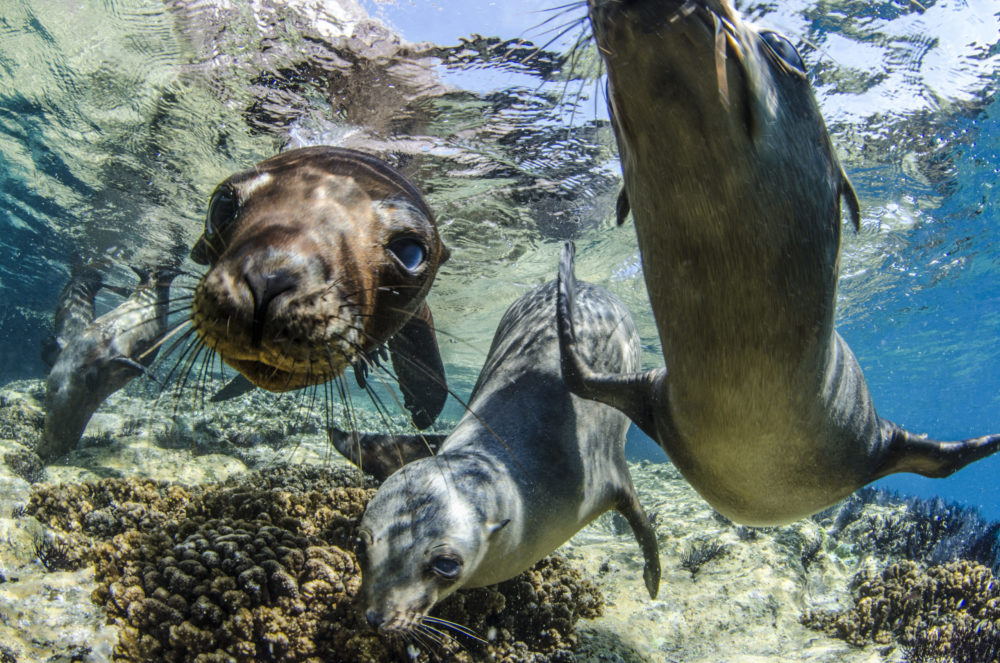
Sea lions at Los Islotes Island in La Paz, Mexico. Photo: Amanda Cotton/Coral Reef Image Bank
What other key climate events or reports are on the calendar in 2021?
Monica: The IPCC is tentatively scheduled to release the first of four volumes of its latest assessment report in July 2021. The first volume focuses on the physical science underlying climate change. It looks at how much the earth and its systems have already changed due to rising temperatures and what the future might look like depending on the actions that we take now. This report touches on every part of the planet and the life on it, including ocean-related changes and regional information. The additional report volumes will likely come out in 2022.
Justin: The Convention on Biological Diversity (CBD) COP 15 is likely to take place this fall with China as the host country. At that meeting, parties will adopt the post-2020 framework, which will set the agenda for the next decade. Deliberations on the new framework are underway, and scientists are calling for the protection and conservation of at least 30 percent of the planet by 2030 as a way to restore biodiversity. And we are increasingly aware that goals such as 30×30 cannot be reached without the engagement of Indigenous Peoples and local communities, their leadership, and free prior and informed consent. We need to make sure that the links among the ocean, climate, and biodiversity continue to be part of the conversation.
Monica: The CBD is coming up on its “Paris-like” moment. COP15 is a crucial moment for governments to show that they are committed to protecting biodiversity and that there is global agreement on how they will work together. It is critical over the next decade to deal with the biodiversity, climate, and ocean crises. We cannot address one without addressing the other two.
Justin: The UN Food Systems Summit is happening in September 2021. Food provides a really nice opportunity to talk about the ocean and climate and biodiversity in ways that everyone can relate to and understand. There are also several other important negotiations underway around issues such as illegal fishing, fishing subsidies, marine transportation, the High Seas Treaty, a potential plastics treaty, and more. They are all things we need to pay attention to as they allow us to connect people, the ocean, climate, and biodiversity.
It is critical over the next decade to deal with the biodiversity, climate, and ocean crises. We cannot address one without addressing the other two.
What would you like to see from the new incoming Biden-Harris administration on climate?
Justin: The actions we take or fail to take today will determine the health of the planet for generations. With all the things in play around climate and the ocean, U.S. leadership matters. I am eager to see the U.S. engage in these forums again as it is so critically important. I am encouraged that the team being put together to work on climate, including Secretary John Kerry and Gina McCarthy, understands the connections between the ocean and climate change.
I am also ready to see science and scientists elevated back to their primary roles in informing our ocean and climate policymaking efforts.
Over the past four years we have seen increased leadership from U.S. governors and mayors, business leaders, philanthropy, Indigenous voices, young people, and others. We need all of these voices to continue to lead and push for ambitious solutions. I am hoping the new administration will create opportunities to engage many more voices in the ocean-climate nexus.
Monica: It’s not just about the new administration showing up for the ocean and for biodiversity and for climate. It will be critical that they demonstrate understanding of the intersections, and that to be successful on one, you have to address all of them together.
It will be interesting to see how this administration carries climate-ocean-biodiversity issues into other parts of international arena, in places such as the Group of Seven (G7) or the UN Security Council. To do that successfully, this administration will need to do enough domestically to be able to ‘walk the walk’ when these topics come up in those forums.
It’s not just about the new administration showing up for the ocean and for biodiversity and for climate. It will be critical that they demonstrate understanding of the intersections, and that to be successful on one, you have to address all of them together.

